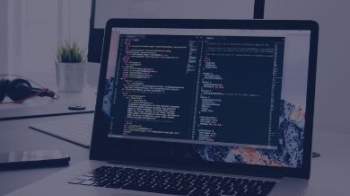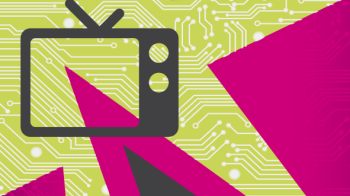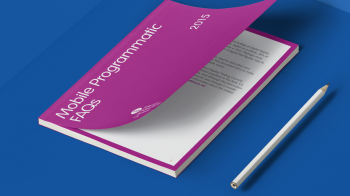Seven predictions for programmatic native in 2017
Alex White
Alex White, VP Product Marketing at Sharethrough looks at the seven predictions for programmatic native in 2017.
2015 was the year programmatic native was born. 2016 was the year it took shape. 2017 is the year it explodes into many varied and exciting new directions.
AlAs DSP buy-in for native becomes universal, programmatic native is going to become a much more liquid market this year, but that’s going to bring with it new pressures and demands. Header bidding will hit native in a big way and native will start to cannibalise display spend. This is also the year that native video is set to establish itself as a new premium video category.
New DSP integrations will grow demand and introduce new buyer segments:
In the nearly two years since the OpenRTB 2.3 established the components for native to be traded programmatically native support has become a must do rather than a nice to have for DSPs. Entering into 2017, we’re getting close to 100 percent native participation among major DSPs. At Sharethrough, we’ve been adding in new OpenRTB 2.3 DSP integrations at a steady clip over the last 12 months. Agency trading desks and media buyers have adopted the new specs for native and are benefiting from using the UI’s of their DSP partners to buy advertising programmatically, which is helping the market mature at pace. Each new DSP Sharethrough integrates with expands overall market liquidity and demand for native, opening up new buyer segments and different types of consumer behaviours around native ads. As liquidity grows, we’re going to see experiments with things like native ads for e-commerce, which were unthinkable a few years ago.
Election aftermath will create high sensitivity around editorial integrity:
Following the election and the ensuing backlash against fake news, editorial integrity is going to become a new X factor in ad tech. There’s going to be growing pressure on ad exchanges to not just be a black box, both about what they’re doing internally to keep editorial standards high and how they’re fighting ad fraud. Programmatic platforms need to be able to provide buyers with transparency and visibility about where ads are ending up. It’s a brand safety issue that can’t be ignored and vendors have already begun to get solutions on the market for flagging and avoiding fake news. Brands are investing in making quality content and they’re going to start demanding adjacency with quality editorial. Premium publishers are starting to adopt native as their ad format of choice, and their sales teams are starting to have great success direct selling brands and advertisers access to advertise in the feed alongside their quality content.
Measurement expectations are increasing, and viewability is going to continue to be an attractive draw for brands:
The industry is starting to coalesce around what should be a simple truth: brands should know where their ads are seen and where they end up. Placing a native ad into the confines of a publisher’s feed that a consumer is moving actively through, has made viewability a simpler equation for native. Being able to guarantee viewability has provided brands with a reassuring level of transparency. This is going to continue to be a strong market proposition in 2017 and should continue to attract brand spend onto the open web, especially as giants like Facebook recover after several public measurement snafus. That said, there are challenges in doing this programmatically as transacting on a viewable CPM isn’t yet the industry standard. Advertisers and publishers like it, but the pipes are not really set-up to support it. This should change in 2017: buyers and sellers want to be able to buy this way, and they’re seeing great results doing so.
Header Bidding is coming to native advertising:
Header bidding is moving publishers away from the traditional waterfall approach and shifting them towards a 'horizontal' bidding structure, maximising competition for their impressions by allowing all demand sources to bid on each individual impression at the same time. By maximising demand, publishers also maximise the value of each impression, capturing revenue that would be left on the table with the traditional waterfall approach. Many publishers have already adopted a header bidding solution for their display advertising, and we’re now seeing this make its way into both the native and video landscapes. As header bidding becomes increasingly popular, it's up to Native SSP's to help educate publishers on the ways this new bidding solution can benefit their bottom line and help provide a solution that helps them reduce the developer hours they’ll need to put in to get it off the ground.
In 2017, native advertising is going to stop being a complementary channel, and start cannibalising display spend:
In 2017, we’re going to see publishers adopt native as their mobile-specific brand format, as they start to wise up to the terrible user experience of traditional advertising there. This will be a catalyst for a greater shift of publishers starting to replace display inventory (specifically on mobile) with native ad formats as they prove more valuable for advertisers and publishers alike. Most publishers understand programmatic technology by now and in 2017 will likely start to apply their existing programmatic strategies to these new native formats in greater numbers to optimise their yield.
Native video will reach new scale this year:
Native video is the logical progression of outstream video, adding a headline and description text to outstream’s “banner ad with a video in it” approach, with spectacular results. The popularity and adoption of outstream has set the table for us to enhance that offering into native video. As Sharethrough brings programmatic native video support online with several major DSPs, and helps our tier-1 publishers develop the sales strategy (over 50 global trainings in 2016), we’re poised to see significant growth here in 2017.
People are spending less time in front of televisions, but video is still the highest impact medium:
Every demographic, apart from those over the age of 65, are spending less time watching video on traditional TV sets. But while that specific audience experience has gotten less popular, video is still easily the highest impact medium. In-feed, autoplay video is going to become the modern equivalent of the TV spot. The power of the autoplay technology, in combination with the context provided by the accompanying headline, is well documented: brand lift, ad recall, and purchase intent can be drastically boosted with just 7 seconds of exposure, according to Facebook research.
Related content
Cross-industry Programmatic Taskforce announces mission & objectives
Learn moreAdform: RTB Trend Report Europe Q4 2014
Learn moreTubeMogul: A UK advertisers guide to programmatic TV
Learn moreMobile Programmatic FAQs
Learn more
Rediscover the joy of digital advertising
Champion connections instead of clicks. Capture audiences' imaginations, not just their attention. Boldly find your own beat instead of letting tech set the pace. It’s time to rediscover the joy of digital.



